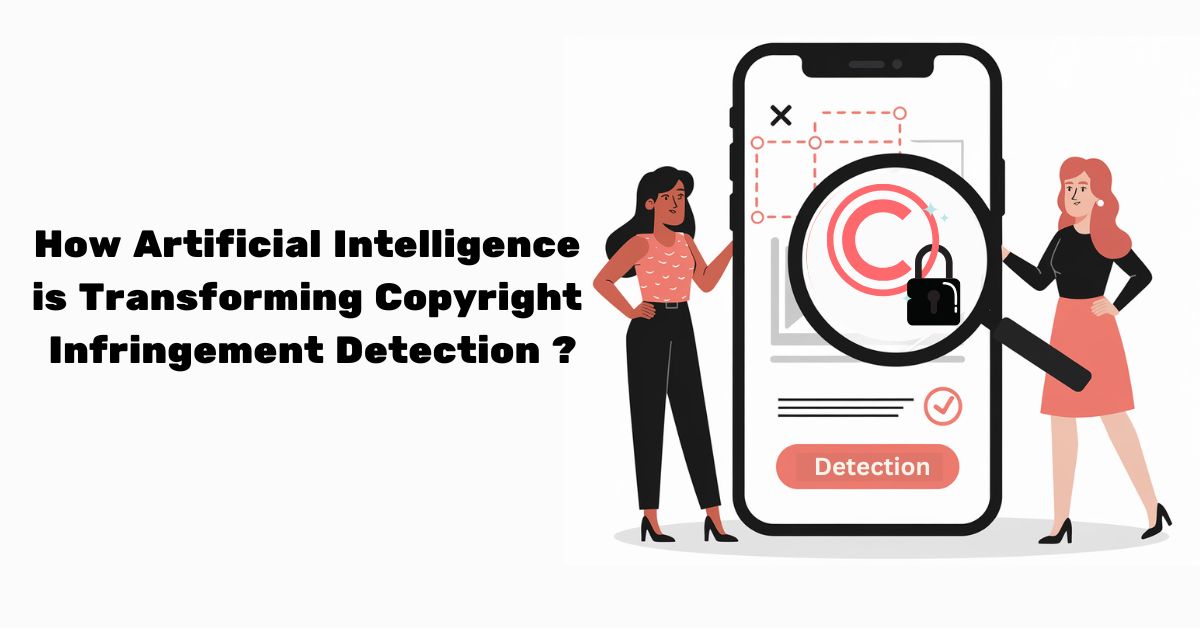The Rise of Artificial Intelligence in Protecting Intellectual Property
As we navigate an increasingly digital world, intellectual property has become more vulnerable than ever. With the ease of accessing, sharing, and replicating digital content, safeguarding copyright has turned into a formidable challenge. Enter artificial intelligence (AI), an innovative solution poised to redefine copyright infringement detection. In this article, we will explore how AI is being leveraged to combat copyright infringement, its current applications, and future implications.
Technological advancements have brought forward AI, offering novel solutions to issues that were once insurmountable. Through this blog, readers will gain insights into the transformative impact of AI in mitigating copyright infringements, supported by real-world applications and success stories.
What is Copyright Infringement?
Copyright infringement occurs when an individual or entity uses copyrighted material without permission from the owner. This violation affects many types of content, which include:
- Music
- Movies
- Software
- Written content
The repercussions of copyright infringement are far-reaching. Economically, it results in significant financial losses for creators and companies, undermining the incentive to innovate and create new works. Creatively, the unauthorized use of work can dilute the original creator’s vision, misrepresent their brand, and diminish the value of their intellectual property.
Artificial Intelligence: A Powerful Tool in Copyright Detection
In recent years, AI has emerged as a powerful tool in copyright detection, offering capabilities far beyond traditional methods. At its core, AI mimics human cognitive functions such as learning and problem-solving, albeit at much greater speed and scale. This is particularly beneficial in the realm of copyright, where vast amounts of digital content need to be monitored simultaneously.
Mechanisms of AI in Spotting Infringements
AI operates through complex mechanisms including machine learning, neural networks, and pattern recognition. Here’s how these technologies work in detecting copyright infringement:
1. **Machine Learning**: By training on large datasets, machine learning algorithms identify patterns and features associated with infringing content. This enables AI to efficiently scan digital platforms for potential violations.
2. **Neural Networks**: Inspired by the human brain, neural networks process data in layers to detect subtle similarities between works. This is especially useful in identifying variations of original content, such as remixes or altered images.
3. **Pattern Recognition**: AI excels at recognizing patterns across different media types, whether it’s text, audio, or video. This allows for swift and accurate detection of unauthorized use of copyrighted materials.
Advantages of AI Over Traditional Methods
AI offers several advantages over traditional copyright detection methods. These include:
– **Speed**: AI can process and analyze large volumes of data in real-time, enabling faster identification and response to potential infringements.
– **Accuracy**: With sophisticated algorithms, AI tools are less prone to errors, reducing the occurrence of false positives and false negatives.
– **Scalability**: AI solutions can easily scale to meet the demands of monitoring extensive digital landscapes across various platforms.
– **Cost-Effectiveness**: Although initial implementation may require investment, AI reduces long-term operational costs by automating what would otherwise be labor-intensive processes.
Real-World Impact: AI in Action
Several companies and platforms have already begun leveraging AI for copyright infringement detection, leading to notable success stories.
One example is YouTube’s Content ID system, which uses AI to scan uploaded videos for copyrighted music or visuals. This system has enabled rights holders to claim and monetize their content or remove infringing videos if necessary.
Another success story is Audible Magic, which provides audio and video fingerprinting services to detect and control the unauthorized use of copyrighted material across various platforms.
“Artificial intelligence has greatly enhanced our ability to protect creative works, ensuring artists receive due recognition and compensation.” – Industry Leader
Challenges Facing AI in Copyright Terms
Despite its advantages, the use of AI in copyright detection is not without challenges. One significant issue is the possibility of false positives, where legitimate content is incorrectly flagged as infringing. This can lead to censorship and stifling of creativity.
Privacy concerns also arise from AI’s capacity to monitor and analyze vast amounts of personal data to determine infringement. The extent to which AI should be trusted to make autonomous decisions about copyright without human oversight is a topic of ongoing debate.
Balancing Tech Use with Ethical Practice
Ethical considerations are paramount when employing AI in copyright detection. Potential biases in AI algorithms, the protection of user privacy, and maintaining transparency in infringement determination are all critical factors. It is essential to strike a balance between leveraging AI’s capabilities and respecting individual rights and privacy.
The Future Beckons: AI and Its Expanding Role
The future holds promising prospects for AI in the realm of copyright infringement detection. Emerging technologies like blockchain are anticipated to complement AI by offering secure, transparent, and immutable records of ownership and content distribution. This synergy could further enhance the accuracy and reliability of copyright detection efforts.
What Lies Ahead?
Looking ahead, advancements in AI are expected to refine and broaden the scope of copyright protection. Innovations such as deep learning and improved natural language processing can facilitate more nuanced copyright detection across various dialects and languages.
As AI continues to evolve, it is likely that its role in copyright infringement detection will grow, contributing to more efficient and effective protection of intellectual property rights on a global scale.
In conclusion, the use of artificial intelligence in copyright infringement detection is transformative, reshaping how we safeguard intellectual property in a digital age. By understanding and leveraging AI’s capabilities, we can look forward to a future where creativity is better protected for generations to come.
Encourage readers to share the post and express their opinions in the comments.
To stay informed on the latest developments in AI and technology, subscribe to our updates. Don’t miss out on the insights that could transform your approach to copyright protection.

By embedding relevant visuals like this, we enhance understanding and engagement while ensuring accessibility through descriptive alt text.
AI has undeniably ushered in a new era for copyright infringement detection, offering unprecedented capabilities to protect creative works. With continuous progress and unwavering attention to ethical considerations, its future promises even greater advancements.







